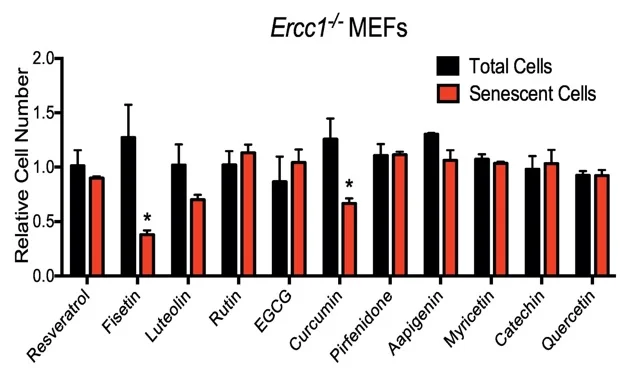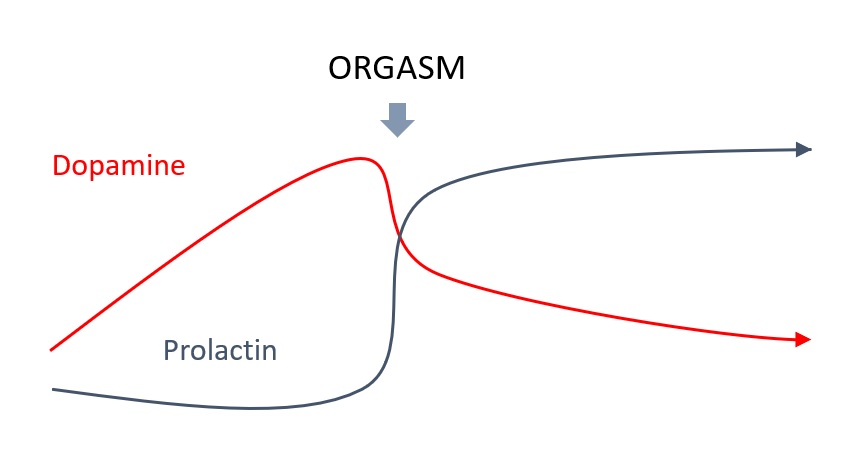
RECENT
Foods that you can eat on a Ketogenic diet
One of the most difficult aspects of a keto diet is knowing what you can and can’t eat. In this article we will outline some keto friendly foods. Some people see the keto diet as an excuse to eat meat and cheese all day long, but this is neither healthy nor sustainable. It is important to keep eating vegetables to ensure you are getting the vitamins, nutrients and fiber you need. Also it is possible for Vegans to follow the keto diet!
One of the most difficult aspects of a keto diet is knowing what you can and can’t eat. In this article we will outline some keto friendly foods.
Is it all meat and dairy?
Some people see the keto diet as an excuse to eat meat and cheese all day long, but this is neither healthy nor sustainable.
It is important to keep eating vegetables to ensure you are getting the vitamins, nutrients and fiber you need.
Many vegans assume a keto diet needs to be high in meat and dairy, and therefore a keto diet is not for them, this is not true, there are many vegan friendly keto options.
What does net carbs mean? Does fiber count?
If you’re going to start the keto diet, first you need to get the carbs out of your kitchen and replace them with some keto friendly options. But before you throw everything away it is important to first understand the difference between total carbs and net carbs.
While fiber is a type of carbohydrate it isn’t absorbed the same way as normal carbs, therefore it is okay to eat while on a keto diet. Fiber makes you feel full and keeps you regular. Many people report they experience constipation while on a keto diet, this is often because they aren’t consuming adequate levels of fiber. If counting carbs on a keto diet you should count “net carbs”, net carbs is total carbs less fiber.
Below is a list of some low “net carb”, keto friendly foods which you can safely eat to your hearts content.
okay so what can I eat?
Seafood
Seafood is a great source of Omega-3 fatty oils, vitamins and minerals. It is high in protein and low in carbs.
If you are pregnant or concerned about mercury, some fish which are lower in mercury include salmon, tilapia, shrimp, tuna, cod and catfish.
Non-starchy vegetables
Vegetables are a great source of fiber, antioxidants and essential nutrients.
However some starchy vegetables are high in carbs and should therefore be avoided (e.g., potatoes and squash).
Some low carb options include: Bell peppers (capsicum), kale, broccoli, cauliflower, asparagus, mushrooms, zucchini, spinach, lettuce, cucumbers,
brussel sprouts, celery, tomatoes, radishes,
onions, eggplant and cabbage.
Cheese
One of the great things about the keto diet is you can almost eat as much cheese as you want!
Hard cheeses are especially low in carbs, but soft cheeses are fine to eat too.
Cream
That’s right, real full fat cream is also fine to consume on a keto diet!
Just make sure it isn’t sweetened as some of the store-bought whipped creams are sweetened with sugar.
Dark Chocolate
A bit of dark chocolate is generally okay, but read the label as it can differ greatly.
Generally, the very high cocoa content (95% and 99%) chocolates have the least carbs.
Avocados
A whole average avocado weighs around 200 grams and contains 18 grams of carbs. However approximately 14 of these 18 grams are fiber, leaving only 4 grams of net carbs!
Meat
Meat and poultry are great sources of protein, vitamins and minerals.
It is best to eat grass fed meat which is higher in important vitamins and antioxidants than grain fed meat.
Eggs
Eggs are a great source of protein and vitamins.
Most of the nutrients are contained in the yolk of the egg, therefore it is important to eat the whole egg, not just the white.
Nuts and seeds
Nuts and seeds are high fat, low carb foods which are also high in fiber.
Particularly low in net carbs are Brazil nuts, Macadamias, Pecans, Walnuts, Chia seeds and flaxseeds.
Butter and oils
Butter is fine to eat on a keto diet, but best to avoid margarine which often contains preservatives and chemicals.
Olive oil and coconut oil are both excellent sources of fat while on a ketogenic diet.
Berries
Berries are high in fiber and low in net carbs, so unlike most fruit they are okay to consume on a keto diet. They are also a great source of antioxidants.
What is the ketogenic diet, does it work, how does it work, and is it safe?
The ketogenic (keto) diet is a low carb, high fat diet which is the new health food craze, but is it safe? And does it work? We examine some of the most recent scientific research to find out.
What is it?
The ketogenic (keto) diet is a low carb, high fat diet. Consuming low levels of carbohydrates forces the body to burn fats as the primary fuel source, this is known as ketosis. People following the keto diet usually try to limit carbohydrates to no more than 5% of their calories, fats account for up to 75% of their caloric intake and proteins approximately 20%.
Does it work?
For losing weight? In short, yes.
There are over 20 double-blind, placebo controlled studies showing that the keto diet, or at least a low carb diet is more effective than high carb, low fat diets for losing weight (1).
In addition, ketogenic diets lead to large reductions in blood sugar and insulin levels, this is believed to reduce inflammation and lead to a range of other health benefits including
Increased ATP and cellular energy (2)
Lowering risk of heart disease (3)
Protecting brain function (4)
Inhibiting growth in certain types of cancer (5) (6) (7)
Reducing seizures in epileptic children (8)
How does it work?
The body uses two sources of fuel to produce cellular energy, carbohydrates and fats. When we are consuming high levels of carbohydrates the body prefers this as a fuel source, and much of the fat we consume is stored for later use. However when the body does not have enough carbohydrate to burn the liver starts breaking down fats, via ketosis. This process converts the fat into ketones, which can then be consumed by the body as an energy source.
Leptin induced satiety
One of the main reasons people lose weight while on the keto diet is due to leptin induced satiety, that means you feel full after consuming fewer calories.
Leptin is a hormone produced in fat cells, which is responsible for telling your brain when the body has sufficient fat stores. High levels of leptin give the brain the signal that is has enough fat and can resume normal metabolic function. Low levels tell the body that it needs to conserve fat, thereby leading to hunger, reduced motivation to exercise and ultimately weight gain. By consuming more fats, you send more leptin to the brain, signaling that you are full, so you don’t feel as hungry (9) (10) (11) (12).
People with obesity have high levels of leptin but often have leptin resistance, therefore their brain does not respond to the increased levels of leptin (13). The consumption of a diet high in sugar seems to lead to leptin resistance (14). It has been suggested that the Keto diet can reset the leptin sensitivity in such people, while this may be possible there is not yet sufficient evidence to support the claim that the keto diet can reset leptin sensitivity.
Reduced food cravings
A second mechanism by which keto works is via insulin and dopamine. Dopamine is often referred to as the motivation hormone, the brain usually produces dopamine in response to a positive surprise however drugs such as cocaine also cause releases of dopamine. When consuming a high carb diet spiking blood sugar levels cause releases of dopamine. The consumption of carbohydrates also causes the level of insulin in the body to spike, insulin has been shown to amplify the effect of dopamine (15). Therefore leading to powerful food cravings. The keto dies reduces levels of insulin thereby reducing these dopamine induced food cravings.
Some studies have shown that even when total caloric consumption is equal, those following the low carb diet tend to lose more weight. However this could be due to the fact that lower muscle glycogen stores results in lower water retention (16) (17) (18).
Is it safe?
It has a positive impact on cholesterol
One of the main concerns about the ketogenic diet is its potential impact on cholesterol. However most of the evidence suggests the Keto diet has a positive impact on cholesterol. Firstly the keto diet tends not to raise LDL cholesterol and it appears to raise the level of “good cholesterol”, or HDL cholesterol. Higher HDL cholesterol levels are associated with lower risk of heart disease (19) (20) (21).
It reduces blood sugar
The keto diet may also be beneficial for diabetics. One study in type 2 diabetics found that the low carb diet drastically reduced blood sugar levels, and 90% of the participants were able to actually reduce their need for their diabetes medications (22).
While the keto dies has been shown in some studies to be beneficial for diabetes, anyone suffering from type 1 or type 2 diabetes should consult a doctor before starting a keto diet. For people with diabetes, ketosis can trigger a dangerous condition called ketoacidosis. This occurs when the body stores up too many ketones and the blood becomes too acidic, this can cause damage to the liver, kidneys and brain, in extreme cases it can be fatal.
Excess ketones can place a strain on the kidney and liver
As ketones are acidic excess production can place strain on the kidney and liver. For healthy people following a ketogenic diet the levels are not a concern however anyone with kidney or liver issues should consult a doctor before deciding to follow a keto diet.
Lastly the keto diet is not an excuse to eat bacon all day. A healthy Ketogenic diet includes lots of vegetables and lean sources of animal proteins. Make sure you follow a diet which is varied, and you are getting plenty of vitamins and minerals. Lastly as with all diets we suggest cycling on an off for periods throughout the year.
The next article in this series provides more information on what foods you can eat on a ketogenic diet.
References
1. https://www.healthline.com/nutrition/23-studies-on-low-carb-and-low- fat-
diets#section1
2. https://www.ncbi.nlm.nih.gov/pubmed/14769489
3. https://www.ncbi.nlm.nih.gov/pubmed/22905670
4. https://www.ncbi.nlm.nih.gov/pmc/articles/PMC2367001/
5. https://www.ncbi.nlm.nih.gov/pmc/articles/PMC1819381/
6. https://www.ncbi.nlm.nih.gov/pubmed/25666556
7. https://www.ncbi.nlm.nih.gov/pubmed/17313687
8. https://www.ncbi.nlm.nih.gov/pubmed/11581442
9. https://www.ncbi.nlm.nih.gov/pubmed/9771856
10. https://www.ncbi.nlm.nih.gov/pmc/articles/PMC2430504/
11. https://www.ncbi.nlm.nih.gov/pmc/articles/PMC3602984/
12. https://www.ncbi.nlm.nih.gov/pmc/articles/PMC3244537/
13. https://www.sciencedirect.com/science/article/pii/S0026049514002418
14. https://www.ncbi.nlm.nih.gov/pmc/articles/PMC2584858/
15. https://neurosciencenews.com/insulin-dopamine-levels-2934/
16. https://www.ncbi.nlm.nih.gov/pmc/articles/PMC538279/
17. https://www.ncbi.nlm.nih.gov/pubmed/17823420
18. https://link.springer.com/article/10.1007%2Fs11745-008-3274-2
19. https://www.ncbi.nlm.nih.gov/pubmed/15505128
20. https://link.springer.com/article/10.1007%2Fs11745-008-3274-2
Hacking aging - Part 2
This is the second part of the series on anti-ageing. In this article we will examine some promising approaches to hacking ageing, backed by scientific research, including fasting and various supplements.
This is the second part of the series on anti-aging. In this article we will examine some promising approaches to hacking aging, backed by scientific research, including fasting and various supplements.
Fasting
What is fasting and does it work?
Fasting is going without food, or consuming a calorie restricted diet for an extended period of time, some fasts are as short as 16 hours, some can be months long.
Fasting is probably one of the most extensively researched and evidence backed approaches for longevity. Strong evidence exists that restricting calories increases lifespan in mice and humans.
Fasting need not be constant, instead fasting for periods of time at regular intervals is sufficient to generate the same benefits seen in long term fasting studies. Interestingly rather than going without food completely similar results to fasting were observed using a Fasting Mimicking Diet (FMD), that is a diet low in calories, sugars, and proteins but high in unsaturated fats (1), one such popular diet is the Keto diet.
How does it work?
When fasting the body no longer has enough carbohydrates to sustain it and therefore switches to autophagy for its energy source. Autophagy literally translated from greek means “to eat oneself”.
The body feeds on the various damaged parts of cells such as cell membranes and proteins, thereby removing them from the body. When these sub-cellular parts are removed they are replaced with new parts, thereby restoring the cells to proper function.
In addition to promoting autophagy fasting also promotes the production of growth hormone, which helps the body produce these new replacement parts (2).
What are the benefits?
One study compared people who consumed a fasting mimicking diet for 5 days once a month for 3 months to those following a regular diet. Those who followed the periodic fasting diet showed reduced body weight and fat, lower blood pressure, and decreased IGF-1 hormone. IGF-1 has been linked to aging and disease. Further studies showed the fasting diet also decreased cholesterol and markers for inflammation (3). Animal studies have demonstrated a range of benefits including wound healing (4), and brain function (5).
How can I implement fasting in my daily life?
There are a number of ways to fast, some common approaches include:
16:8 fast: This involves limiting consumption to an 8 hour window per day. This cycle can be practiced as often as you like, once, twice per week or every day. An example of this would be skipping breakfast, but having a healthy lunch and dinner.
24 hour fast: This involves skipping meals for 24 hours, e.g. if your last meal is dinner you do not eat again until dinner the following night. This type of fast is more difficult and therefore not practiced as often, some people choose to do this once a week or once a month.
5:2 fast: This involves eating regularly for 5 days a week and eating a calorie restricted diet (no more than 500 calories per day) for 2 days a week.
Similar results can be achieved by following a calorie restricted diet such as the Keto diet. More information on the Keto diet can be found here.
Calorie Restriction Mimetics (CRM)
Let’s face it, fasting sucks, it is difficult for most people to maintain a fasted state, or even maintain intermittent fasting over a long period, therefore scientists have been researching Calorie Restriction Mimetics (CRM’s).
CRM’s are compounds when ingested mimic the body’s response to being in a fasted state. One promising group of CRM’s are sirtuin activators.
What sirtuans and sirtuan activators?
Sirtuans are proteins in the body which are responsible for DNA maintenance and repair. These genes are activated when the body senses it is in a stressed state (e.g. fasting). One of the seven sirtuans found in humans, SIRT1, can be activated by natural compounds known as polyphenols. Polyphenols are found in plants, where they are involved in defending plants from ultraviolet radiation and pathogens. Polyphenols include pterostilbene which is found in blueberries, resveratrol which is found in the skin of grapes and curcumin.
What else is required for sirtuan activators to work?
Sirtuans can only function in the presence of nicotinamide adenine dinucleotide (NAD+), NAD+ is a coenzyme found in all cells, it is responsible for helping turn nutrients into energy and regulating other biological activity. NAD+ levels in humans decline with age. Therefore boosting levels of NAD+ can help Sirtuans to continue functioning into old age.
Do these supplements work and can they by purchased?
Recent studies have highlighted potential positive effects from increased NAD+. One study showed that mice supplemented with NAD+ precursers showed increased levels of DNA repair and the tissues of 2 year old mice appeared identical to that of 3 month old mice (6). Another study showed increased levels of cognitive ability (7). There are not yet any results from human trials.
NAD+ can be taken directly or NAD+ levels can be increased by supplementation with the NAD+ precursors Nicotinamide Riboside (NR) or Nicotinamide Mononucleotide (NMN), both have been shown to raise the levels of NAD+ in the body. NR and NMN are derived from nicacin which is a form of vitamin B3, an essential human nutrient.
Most of these supplements can be purchased online, but beware are a lot of inferior products, and many which are not what the claim to be. Make sure you go with a reputable brand.
Senolytics
What are senescent cells?
As we age the body accumulates an increasing number of senescent cells. Sensescent cells are cells which are not functioning properly, but have not yet died off and been recycled, as cells are when we are younger.
Senescent cells secrete inflammatory factors, and appear to play a role an important role in ageing and many age related diseases including dementia, diabetes and cardiovascular disease (8).
Do senolytics work, and where can I purchase them?
The class of drugs known as senolytics target senescent cells, removing them but leaving healthy cells untouched. In various mice studies it has been shown that removal of senescent cells can prevent or delay tissue dysfunction and extend healthy lifespan (9, 10).
Many plant based compounds have powerful senolytic effects, one study compared the senolytic efficacy of various plant compounds in mouse cells and in senescent human fibroblasts, the results can be seen in the chart below (11).
Mouse embryonic fibroblasts (MEFs) were treated with a panel of flavonoid compounds, and the the viability of senescent cells and total cells were measured.
Among the 10 flavonoids tested Fisetin was the most effective. Fisetin is a natural compound found in strawberries, apples, cucumbers, grapes and onions. There are only a very few suppliers online, more common is curcumin, which can easily be purchased, fresh or in pill form. The bioavailabiliy of pure curcumin is relatively low, however taking it with piperine has been shown to increase its bioavailablity by as much as 2000%.
Metformin
No longevity discussion would be complete without mentioning Metformin. Metformin is a drug used to treat diabetes. When administered it mimics caloric restriction and therefore has also been shown to extend lifespan. The exact mechanism by which metformin works to increase lifespan is not yet fully understood. It appears to operate on a number of pathways including decreasing IGF-1, inhibition of mTOR, reducing DNA damage, and influencing inflammation and autophagy and influencing digestion in the gut microbiome (12).
Studies have demonstrated Metformin’s ability to increase lifespan in mice (13, 14). Several studies have shown metformin may be beneficial for decreasing the incidence of cancer, improving cognitive function and increasing lifespan (15, 16, 17). More targeted studies in humans are currently being conducted.
Metformin can in most countries be purchased with a doctor’s prescription.
Stacking for increased benefits
Evolve Fitness recommends stacking a sirtuan activator (e.g. resveratrol) an NAD+ precurser (such as NMN or NR) and a senolytic (curcumin), these can safely be taken on a daily basis however we recommend periodically taking a break from all supplement regimes. If you are considering taking metformin for longevity purposes we recommend you speak with your doctor first.
References
1. https://www.ncbi.nlm.nih.gov/pmc/articles/PMC4509734/
2. https://www.nobelprize.org/prizes/medicine/2016/press-release/
3. http://stm.sciencemag.org/content/9/377/eaai8700
4. https://www.ncbi.nlm.nih.gov/m/pubmed/25881054/
5. https://medium.com/lifeomic/this-is-your-brain-on-fasting-a77d9d264de7
6. http://science.sciencemag.org/content/355/6331/1312
7. https://www.ncbi.nlm.nih.gov/pubmed/29432159
8. https://www.ncbi.nlm.nih.gov/pubmed/26485647/
9. https://www.ncbi.nlm.nih.gov/pubmed/22048312/
10. https://www.ncbi.nlm.nih.gov/pubmed/26840489/
11. https://www.ebiomedicine.com/article/S2352-3964(18)30373-6/fulltext
12. https://www.ncbi.nlm.nih.gov/pmc/articles/PMC5943638/
13. https://www.ncbi.nlm.nih.gov/pubmed/18728386
14. https://www.ncbi.nlm.nih.gov/pubmed/21386129
15. https://www.ncbi.nlm.nih.gov/pubmed/24985407/
Hacking aging - Part 1 Could you live to 150?
If you could take a pill that allowed you to live to 150 would you? Would the answer change if you could spend those years looking and feeling fit, young, healthy and disease free? Believe it or not science may be very close to making this possible.
If you could take a pill that allowed you to live to 150 would you? Would the answer change if you could spend those years looking and feeling fit, young, healthy and disease free?
Believe it or not science may be very close to making this possible. In this article we will discuss some of the most promising recent discoveries in anti-aging research and which of these are already available.
What is longevity or anti-aging really about?
Modern medicine has become very good at repairing many of our organs, and keeping our hearts and lungs functioning. However often our brains and muscles fail us and we spend a considerable portion of the end of our lives in suffering.
Longevity isn’t about just about living longer, it is about living better and spending less of our lives in a diseased or frail state.
The biggest driver of disease is aging. In fact, age is the biggest risk factor for lung cancer, many times more important than smoking! Age is a key risk factor in many diseases including cancer, heart disease and diabetes.
If we could wind back the body clock, we would greatly reduce the risk of all these diseases, and be able to lead fitter, healthier lives. David Sinclair, who leads Harvard’s anti-aging research would go one step further to say aging itself is a disease, and one that is curable.
Anti-aging is a relatively new and exciting area of study, most of the studies to date have been on yeast and mice however the results are promising. Scientists have already been able to significantly slow and even reverse aging in the lab in yeast, mice and monkeys. Human trials are also beginning.
In the first part of this two-part series we will discuss the recent anti-aging discoveries in blood borne factors.
Can young blood make you younger?
Credit: Villeda lab
In 2005, scientists at Stanford conducted a gruesome experiment whereby they surgically attached an older mouse to a younger mouse, so that they shared one blood supply. What they observed was this improved the ability for the old mouse to heal and regenerate, effectively making the old mouse appear younger again.
It is believed that somehow the blood from the younger mouse caused the stem cells from the older mouse to become more effective at repairing damaged cells and tissue in the older mouse.
This discovery led to some silicon valley start ups offering older patients blood plasma infusions from younger donors! However in February 2019 the FDA announced such services would require Investigational New Drug approval - this effectively put these companies out of service for the time being.
The Young Blood Institute is currently conducting a large scale trial of blood transfusions (rather than infusions). In a transfusion they replace aged plasma in older subjects with young plasma components form younger subjects. Blood transfusions are considered safer than infusions, as the total volume of blood in the patient remains the same. The trial began in 2018 and will continue over the next 2-3 years, or when the first 1,000 patients are completed, whichever comes first.
To date there have been no published results but the anecdotal reports have been promising. Several patients have reported improved memory, stamina, sex drive and improved feelings of well being.
If infusing the plasma from younger people sounds a little too gruesome for you, don’t be discouraged. Scientists are working to identify the factors within young blood which might be responsible for the positive effects. This would allow the individual factors to be isolated and delivered in a targeted medicine.
Blood consists of over 10,000 factors so it is a difficult task identifying the exact constituents responsible for the beneficial effects seen in the older mice, however a number of studies have already identified several constituents which seem promising. The most promising discoveries to date include GDF-11, TIMP-2, Oxytocin, and MANF, each of these is discussed in more detail below.
GDF-11 (Growth Differentiation Factor 11)
GDF-11 is a protein found in the blood of all mammals. A team at Harvard has claimed that the levels of GDF-11 in the blood of mice declines as the mice age, and therefore is more prevalent in younger mice. The team injected GDF-11 into older mice and was able to show that the muscle density in the older mice improved to youthful levels (1). The findings earned the team the award for scientific achievement of the year in 2014.
Several members from the Harvard team have since founded a company, Elevian which is investigating human applications of GDF-11 and other factors. They believe these factors may be able to restore the body’s natural regenerative capacity, to address a root cause of age-associated disease.
So far there have been no results from clinical trials where humans have been administered with GDF-11 however Biohacker Steve Perry has been self-experimenting with GDF-11 since 2014. Since 2014 Steve has enlisted over 100 volunteers in his study. This is not a double-blind placebo-controlled study so the results should be read with caution, but it is worth a look.
Steve Perry claims that many of the volunteers in his study reported improvements in blood pressure, heart rate variability, resting pulse rate, blood glucose, hand grip strength, reaction time, memory, eye sight, smell, hearing, and for some their grey hairs disappeared! (2)
GDF-11 is not FDA approved and the risks associated with supplementing GDF-11 in humans are not yet known, therefore we would caution against experimenting on yourself. In one study GDF-11 was shown to be damaging to the liver (3). To minimize risk the doses used by the participants in Steve’s study were extremely low (requiring dilution by a factor or hundreds of thousands) and the participants in Steve’s study closely monitored their vitals, and other biomarkers on a daily basis.
GDF-11 is available for purchase on the internet however rather than supplementing GDF-11 directly, you can boost it more naturally using regular exercise. People who exercise regularly over the long term demonstrate higher levels of GDF-11 then people who lead sedentary lifestyles (4).
TIMP-2 (Tissue inhibitor of metalloproteinases 2)
TIMP-2 is a human gene and protein. One study showed that injecting mice with blood plasma from a human umbilical cord, resulted in significantly improved cognitive function. Elderly mice that received the plasma were quicker to learn and remember the escape hatch location in a maze, they were better at learning associations between a room and an electric shock and faster making nests for their babies.
The team who conducted this experiment proposed this was due to TIMP-2. TIMP-2 levels start high when we are born and decline throughout life, similar to GDF-11.
When TIMP-2 was injected directly into the older mice they observed cognitive improvements similar to those mice that were injected with the umbilical cord plasma. Also when TIMP-2 was removed from the umbilical cord blood plasma before it was injected, no cognitive function improvement was observed (5).
The mechanism by which TIMP-2 works is not yet understood. A clinical trial to see if young human blood plasma can slow the cognitive decline of people with Alzheimer’s is being conducted. So far there are no studies assessing the safety of TIMP-2 supplementation in humans.
Sugars from the Aloe Vera plant have been shown to induce TIMP-2 production in the skin of rats when applied directly to wounds (6). Potentially Aloe Vera products may be able to increase TIMP-2 levels in humans, although this has not yet been demonstrated.
Oxytocin
Oxytocin is a hormone produced in the body which plays a role in social bonding, sex and childbirth. It is often referred to as the ‘love hormone’. Oxytocin is released when we hug someone or hold their hand, it promotes feelings of trust, romance and friendship, it also increases libido. Oxytocin is released after birth to promote bonding with the baby.
Similarly to GDF-11 and TIMP-2, Oxytocin declines with age. One study demonstrated that Oxytocin has beneficial effects on maintaining healthy muscles and healing in old mice. Older mice who were injected with Oxytocin recovered faster from muscle injury than mice who were not treated with Oxytocin. The same study also demonstrated that when Oxytocin is blocked in young mice, their ability to repair muscles declined (7).
Unlike GDF-11 and TIMP-2, Oxytocin is already approved by the FDA for clinical use in humans. Pitocin is a synthetic form of Oxytocin used to help with childbirth. Also you can easily increase your own levels of Oxytocin naturally through a variety of activities including hugging, sex and, in women, nipple stimulation. Engaging socially, or playing with dogs has also been shown to increase levels of Oxytocin.
MANF (Mesencephalic Astrocyte-derived Neurotrophic Factor)
MANF is protein which is secreted by the body in response to stress. MANF is responsible for regulating metabolism and immune response. It also, like the other factors mentioned, declines with age.
In one study it was observed that MANF promoted the activation of immune cells which promoted neuroprotection and tissue repair (8). Researchers have also shown the same mechanism protects against liver damage in older mice and extends lifespan in flies.
Flies genetically engineered to express less MANF suffered from increased inflammation and shorter lifespans. Similarly older MANF deficient mice showed signs of bad health. When older mice shared a blood supply with MANF deficient younger mice, they did not see the benefits they would if sharing with younger normal mice (9).
There are several ways to increase your natural levels of MANF with the safest and easiest being fasting (10), and exposure to heat (e.g. via a sauna) (11).
Up next
In the second part of this series we will discuss some more practical approaches to anti-ageing, including fasting and various supplements which are readily available.
References
1. https://www.ncbi.nlm.nih.gov/pubmed/23663781
2. https://www.youtube.com/watch?v=Oe9mDFRJFuk
3. https://www.fasebj.org/doi/abs/10.1096/fj.201800195R
4. https://physoc.onlinelibrary.wiley.com/doi/full/10.14814/phy2.13343
5. https://www.ncbi.nlm.nih.gov/pmc/articles/PMC5586222/
6. https://www.ncbi.nlm.nih.gov/pubmed/24491493
7. https://www.ncbi.nlm.nih.gov/pmc/articles/PMC4512838/
8. https://www.ncbi.nlm.nih.gov/pubmed/27365452
9. https://www.nature.com/articles/s42255-018-0023-6
Is a parasitic fungus the secret to athletic performance?
Cordyceps sounds like something out of a horror movie, it is a parasitic fungus that infects its host and devours it from the inside out, eventually killing it. However this parasitic fungus has been used for centuries in eastern medicine to improve performance and was at the center of a Chinese doping scandal. Could it be a powerful supplement to boost your athletic performance?
What is Cordyceps?
Cordyceps sounds like something out of a horror movie, it is a parasitic fungus that infects its host and devours it from the inside out, eventually killing it. Once it finishes consuming the hosts body, it sprouts a mushroom from the hosts head, and releases its spores to begin the whole cycle again with another host. Fortunately for us Cordyceps only infect insects.
What is it used for?
Cordyceps have long been used in traditional Chinese medicine to increase energy, treat asthma and improve sexual function. It is said that the benefits of Cordyceps consumption were first discovered when herders in the Himalayas observed that yak, goat and sheep which had eaten the mushroom became very strong and stout. The local people then used the fungus to improve the vitality of their cattle, and it was not long before the locals themselves started consuming it. The locals claimed it had aphrodisiac effects and it became known as Himalayan Viagra(1).
Cordyceps hit the headlines in 1993 during the Beijing Olympic games when several Chinese runners smashed various world records and attributed their success to eating Cordyceps mushrooms.
Wang Junxia beat the 10,000 meters women's world record by an astonishing 42 seconds, she also broke the 3000 meters world record and her teammate set a new world record in the 1,500 meters. It sounded too good to be true, could a mushroom do all this? Probably not.
Wang Junxia of China, center.
Credit Ed Reinke/Associated Press
Does it really work?
It appears this team may have been taking much more than mushrooms. In 2016 a letter reportedly from Wang and nine other athletes was published which alleged Coach Ma forced them to dope(2). In addition Coach Ma was fired from the Chinese national team in 2000 after 6 of his athletes tested positive for performance enhancing substances. However just because of this scandal the ability for Cordyceps to positively affect athletic performance should not be written off as several recent studies have shown some impressive results.
“Cordiceps has a significant positive effect
on athletic performance”
One human study showed that supplementation over a three week period (4 grams per day) resulted in significant improvements in the body's ability to absorb oxygen, improvements in exercise endurance and in some measures of heart health(3). Another study showed that exercise performance for healthy older people was significantly improved upon taking Cordyceps versus the placebo group (4)
The mechanism by which Cordyceps improves athletic performance is not fully understood but it is believed that Cordyceps helps improve blood flow as well as the body's ability to burn fat and process glycogen(5) (glycogen is the carbohydrate energy store within our muscles). Together these effects increase the availability adenosine triphosphate (ATP) in the body, ATP is the source of energy the body uses to power the contraction of muscles.
In addition Cordyceps have been shown to delay lactate accumulation(6). Lactate accumulation is responsible for that burning feeling in muscles during intense exercise, consuming Cordyceps means you can exercise harder for longer.
But the benefits of Cordyceps are not limited to athletic performance; Cordyceps are also a powerful antioxidant(7), have been shown to help regulate the immune system(8), may help fight certain types of cancer(9) and may be beneficial for brain function(10).
It is important to note that most of the studies on athletic performance only observed benefits when supplementation continued for several weeks, very little benefit was shown from short term (one week or less) supplementation. Therefore if you choose to supplement with Cordyceps, you will need to keep it up for several weeks before you can expect to see results.
But not all Cordyceps are created equal!
The form of Cordyceps most commonly shown in pictures, where you see a mushroom sprouting out the head of a caterpillar is Cordyceps sinensis, it grows wild at high altitude in the Himalayas.
Cordyceps sinensis growing on caterpillars
Due to high demand and limited availability, wild Cordyceps now cost around $50,000 a kilo! Beware of any supplements which state they contain wild Cordyceps Sinensis, due to the high price tag these supplements often contain very little of the mushroom.
Fortunately there are other varieties of Cordyceps which can be grown in the lab which are far cheaper – and vegan friendly!
One of these is Cordyceps CS-4, Cordyceps Cs-4 is a mycelium culture which is grown in liquid vats, Cs-4 is unable to produce a mushroom but the mycelium which is cultivated has many of the same health benefits.
Another variety is Cordyceps militaris, which grows in Europe, and actually contains more cordycepin than the other species! Cordycepin is one of the constituents of Cordyceps which has anti-cancer, anti-oxidant and anti-inflammatory activities(10).
Cordyceps militarism
Just beware of Cordyceps supplements which are grown on grain, often these contain mostly grain and very little of the mushroom or mycelium itself. Unfortunately it is not easy to identify such supplements but one red flag is if the label says anything like "myceliated brown rice/grain".
Unfortunately you won't find Cordyceps in your grocery isle but a range of supplements and extracts can be found online. Below is a selection of brands which offer products high in beneficial mycelium or mushroom content.
Another great way to get your daily dose of Cordyceps is to take it in your coffee or hot chocolate, the guys at Four Sigmatic produce some great mushroom blends.
References
https://www.nytimes.com/2016/02/25/world/asia/china-olympics-doping-ma-junren.html
Feng K, Yang Y. Q, Li S. P. Renggongchongcao. In: Li S. P, Wang Y. T, editors. Pharmacological Activity-Based Quality Control of Chinese Herbs. New York: Nova Science Publisher, Inc.; 2008. pp. 155–78.
https://www.sciencedirect.com/science/article/pii/S1382668916300308
Drugs and supplements for sexual performance
We examine various drugs and supplements which have been shown to increase libido, in men and women. Including Cabergoline, Bromocriptine, Mucuna Pruriens, Tribulus Terrestis, D-aspartic acid and L-Citrulline.
Whether you have low libido or are just looking to spice things up in the bedroom, this article may be for you. We will examine various drugs and supplements which have been shown to increase libido, in men and women.
Low libido affects around 15% of men and 32% of women (1). The leading causes of libido suppression include stress, anxiety, depression, diabetes, obesity, high blood pressure, and cholesterol. In addition, certain sex hormones decline with age, especially in men.
There are many lifestyle changes which can have a positive impact on sex drive, and these should be explored before considering drugs or supplements. Behaviors such as consuming a healthy balanced diet, exercising regularly, maintaining healthy levels of stress and anxiety and getting at least 7 hours of sleep a night can all can help with libido. However for those who have tried such changes or are still looking for an additional boost, there are a number of drugs and supplements which can be effective.
Most of the drugs and supplements which impact libido operate via one of 3 mechanisms of action; i) via dopamine and / or prolactin, ii) via androgenic hormones, or iii) through vasodilation.
The Dopamine / Prolactin connection
Dopamine and prolactin are closely linked to sex drive. It is theorized that dopamine increases sexual desire while prolactin reduces it, the link between dopamine and sex drive has been well established in men, but is less clear in women (2).
Dopamine is a key neurotransmitter, involved in many pathways in the brain. Dopamine is associated with motivation and concentration. Too much or too little dopamine can be detrimental, low dopamine can lead to Parkinson’s disease while abnormally high levels of dopamine have been linked to schizophrenia and other psychiatric disorders.
Prolactin is a hormone, so named because it has a key role in milk production, however it also has over 300 other functions in the human body playing a key role in reproduction, metabolism, regulation of fluids, regulation of the immune system and influencing behavior.
Dopamine and prolactin appear to move in opposite directions, when dopamine is high, prolactin is low, and vice versa. Prolactin is produced after orgasm and it has been suggested that it may be responsible for the sudden change in mood many men feel after ejaculation.
As Dopamine is the incentivization hormone, it drives the desire to have sex, once the prolactin is released, dopamine levels fall and all of a sudden, the man is left wondering where the desire came from in the first place. This relationship can be observed in the chart below.
One study showed that the ability for some men to achieve multiple orgasms, may be attributable to reduced prolactin production in those individuals (3). This suggests that blocking prolactin could allow the average man to also achieve such states. In comes Cabergoline.
Cabergoline
The drug Cabergoline blocks the release of prolactin and has been shown to increase erections and libido in men (4). In one study, 60 healthy males normally needed a break of 19 minutes between orgasms. After taking cabergoline, they were able to have several orgasms within a few minutes.
Cabergoline has also been reported to increase the intensity of male orgasms (5). Another study showed Cabergoline can be effective in increasing sex drive in both men and women, who are suffering from elevated levels of prolactin (6).
High doses of Cabergoline can have unwanted side effects, some studies have shown it can increase the risk of heart failure, however at normal doses the risk appears low (7). Also some level of prolactin is desirable as prolactin supports neurogenesis (growth in brain tissue) so blocking it completely for a long time period is not recommended.
Bromocriptine
Bromocriptine works in a similar way to Cabergoline. Bromocriptine stimulates dopamine production and simultaneously reduces the levels of prolactin, although not by as much as Cabergoline. Bromocriptine has been reported by many men and women to have a powerful impact on sex drive.
Bromocriptine has been shown to increase libido in men recovering from dialysis treatment (8). Bromocriptine was also shown to increase sex drive in women suffering from high levels of prolactin (9).
Like cabergoline, bromocriptine, especially in high doses can have unwanted side effects such as high blood pressure, seizure or stroke. It is not recommended to take any of these medications without the supervision of a doctor.
Mucuna Pruriens – a natural dopamine precursor
A safer alternative to increase levels of dopamine would be so use a natural supplement, such as Mucuna Pruriens.
Mucuna Pruriens, otherwise known as Velvet Bean is a tropical bean native to Africa and Asia. It has been used in Ayurvedic medicine to treat snake bites and Parkinson’s disease. The seeds of the plant contain between 3-6% L-Dopa. L-Dopa is a precursor to dopamine and has the advantage of being able to cross the blood-brain barrier, whereas dopamine cannot. Once L-Dopa has entered the central nervous system it is converted to dopamine. L-dopa supplementation is therefore more effective than direct supplementation with dopamine.
Mucuna Pruriens is widely sold as a supplement to increase motivation, improve mood and as an aphrodisiac. Unfortunately there is limited research on its effects on sex drive in humans however it has been shown to increase sexual behavior in male rats (10).
The Androgenic compounds
Androgens are natural or synthetic steroid hormones which regulate the development of male characteristics. Androgens are produced in the human body in the testes, ovaries and adrenal glands. The main androgen hormone in men is testosterone. Although testosterone is mainly thought of as a male sex hormone, women also produce testosterone although at lower levels.
Testosterone plays a critical role in libido and sexual arousal in both men and women. Testosterone levels are often lower in people who lead sedentary lifestyles, have poor diets or lack sleep. Testosterone levels also decline naturally with age. Testosterone supplementation has been shown to increase libido in men and women with suppressed testosterone levels (11) (12).
Testosterone is widely used in high doses in the bodybuilding community.
Direct supplementation of testosterone can lead to unwanted side effects such as acne, hair loss, deepening of voice, facial hair growth and in women enlargement of the clitoris – however these tend to only occur at higher doses such as those used for bodybuilding. In addition supplementing exogenous testosterone can inhibit the body’s natural production mechanism, making the problem of low testosterone worse once you stop supplementing.
Due to the side effects we would recommend avoiding direct supplementation with testosterone and rather suggest raising levels naturally through improved sleep, diet and exercise. If these factors alone aren’t sufficient you can try supplementing with Tribulus Terrestis or D-aspartic acid.
Tribulus Terrestis
Tribulus Terrestis is a small leafy plant which grows in Europe, Asia, Africa and the Middle East. The root and fruit of the plant have been used for centuries in traditional Chinese medicine and Ayurvedic medicine for a variety of purposes, including increasing libido.
The jury is still out on how effective Tribulus is at increasing testosterone levels, however it has shown promise in some studies in women. One study of postmenopausal women with low libido found that supplementation with Tribulus over a 120 day period increased levels of testosterone and sexual desire (13). However other studies have not been able to back up these findings, especially in relation to the broader population (14).
D-aspartic acid
Another supplement which may be effective at increasing testosterone levels is D-aspartic acid. D-aspartic acid is a naturally occurring amino acid and it is important for brain and nerve development, as well as the development of testosterone.
However again the research findings are mixed. It seems D-aspartic acid is most effective at raising testosterone levels in non-resistance trained men (15). Studies in active resistance trained men found supplementation either had no effect or even reduced testosterone levels (16) (17) (18), therefore we would recommend supplementation only in individuals with suppressed testosterone levels and relatively inactive lifestyles.
There is no real research available on the efficacy of D-aspartic acid in women however as it works via stimulating the testes, it is unlikely to have the same effects for women.
Vasodilators
Another class of supplements works by increasing circulation, typically by increasing levels of nitric oxide. These compounds have less of an effect on sexual motivation but can improve erections in men and sensation in both men and women.
Nitric oxide (NO) is a molecule produced naturally in the body. NO is responsible for vasodilation, increased levels for NO cause the inner muscles of blood vessels to relax, which causes them to widen, thereby increasing circulation. The link between NO and erections is well established (19). Sildenafil (Viagra) works by inhibiting the enzyme which is responsible for breaking down NO in the genitals, thereby improving circulation in this area.
Viagra (Sildenafil) is a powerful vasodilator.
L-Citrulline
For anyone not wanting to take drugs such as Viagra another option is L-Citrulline. L-Citruline is an amino acid which is produced naturally in the body and is also found in various foods, including watermelon. L-Citriline has been shown to increase NO synthesis, thereby improving circulation (20). Supplementation with L-Citriline has been shown to improve erections in patients experiencing mild erectile dysfunction (21).
In conclusion
The causes of low libido can vary significantly from individual to individual, therefore no one treatment will work for everyone. The best approach is to ensure a healthy lifestyle with low stress, plenty of sleep and exercise and a healthy, balanced diet. For those looking for an additional boost a mixture of herbal remedies such as mucuna pruriens, Tribulus, D-aspartic acid and L-Citriline may help.
References
1. https://www.ncbi.nlm.nih.gov/pmc/articles/PMC2695750/
2. https://www.ncbi.nlm.nih.gov/pubmed/7770195
3. https://www.nature.com/articles/3900823
4. https://www.ncbi.nlm.nih.gov/pubmed/14656205
5. http://news.bbc.co.uk/2/hi/health/1949087.stm
6. https://www.ncbi.nlm.nih.gov/pubmed/29746287
7. https://www.ncbi.nlm.nih.gov/pmc/articles/PMC5240058/
8. https://www.ncbi.nlm.nih.gov/pubmed/6357576
9. https://www.ncbi.nlm.nih.gov/pubmed/29475005
10. https://www.ncbi.nlm.nih.gov/pubmed/20456630
11. https://academic.oup.com/jcem/article/91/7/2509/2656285
12. https://www.ncbi.nlm.nih.gov/pmc/articles/PMC2673004/
13. https://www.ncbi.nlm.nih.gov/pubmed/27760089
14. https://www.ncbi.nlm.nih.gov/pubmed/26727646
15. https://www.ncbi.nlm.nih.gov/pubmed/19860889
16. https://www.ncbi.nlm.nih.gov/pubmed/25844073
17. https://www.ncbi.nlm.nih.gov/pubmed/28841667
18. https://www.ncbi.nlm.nih.gov/pubmed/24074738
19. https://www.ncbi.nlm.nih.gov/pubmed/8248281
14 ways to improve your sleep
A good night’s sleep is one of the most important things you can do for your overall health, arguably more important than diet or exercise. Poor sleep has been linked with weight gain, heart disease, increased risk of infection, diabetes, reduced sex drive, memory problems, cancer, depression and ultimately death!
7/10 people have difficulty sleeping at least one night per week (1). If you are reading this article then chances are you do too.
A good night’s sleep is one of the most important things you can do for your overall health, arguably more important than diet or exercise. Poor sleep has been linked with a range of health problems including weight gain (2), heart disease (3), increased risk of infection (4), diabetes (5), reduced sex drive (6), memory problems and Alzheimer’s (7), cancer (8), depression (9) and ultimately death (10)!
This article outlines various methods which have been shown to improve sleep. Unfortunately there is no one-size-fits-all solution however experimenting with various approaches below should help you get a better nights rest.
Fix your diet
Avoid sugar
High sugar intake has been associated with lighter, less restorative sleep and more awakenings during the night (11). This can lead to a viscous cycle, when people are tired from lack of sleep, they tend to crave more junk food, so the cycle repeats (12). Try to avoid foods high in refined
sugar, especially before bed.
Avoid spice
Spicy food may also be a culprit in keeping you awake. Not all spicy food is to blame (some spices may help promote sleep) but chili and mustard have been shown to raise body temperature, which is the enemy of sleep.
The active ingredient capsaicin is the culprit (13). In addition too much spicy food can cause gastric disturbance, indigestion and can leave you feeling restless throughout the night.
Avoid alcohol
A glass of red wine might make you feel sleepy, and indeed alcohol can help people to fall asleep but several studies have shown alcohol reduces REM sleep. REM sleep is the stage of sleep when you are dreaming, and it is thought to be the restorative phase of sleep.
Alcohol also causes dehydration, and releases toxins into the body which can make you feel even worse in the morning.
In one study as little as one drink was shown to impair sleep quality. Moderate alcohol consumption lowered restorative sleep quality by 24% and a high alcohol intake by as much as 39% (14).
Change your behavior
Don’t do this!
Eliminate screens
Cell phones, television screens and computers all emit blue light. Blue light has been shown to reduce our body’s natural production of the sleep inducing hormone, melatonin.
A study of screen use before bed found screens emitting more blue light led to poorer sleep outcomes (15).
If you need to use a screen before bed,
try to activate the blue light filter, or wear
blue blockers (described below).
Try meditation
Is a racing mind keeping you up at night? Oftentimes when we lie in bed we start replaying the days events or we start worrying about the future.
Meditation helps focus the mind on the present, it helps us acknowledge and realize the thoughts and emotions which are causing us stress and anxiety.
It has been shown that meditation helps slow breathing and lower the heart rate (16), both of which help the body relax and fall asleep. Mindfulness meditation has been shown to be an effective way to promote sleep (17).
If you are new to meditation I suggest using a guided meditation, you can find a number guided meditations on YouTube or through apps such as Headspace, or Waking Up.
Read a book
Reading, like meditation refocuses the mind away from stressful thoughts and anxieties.
One study showed that reading a book for only 6 minutes reduced stress levels by 68% (18), which was more than listening to music, drinking tea or going for a walk.
Reading is also a good substitute for television and social media, which have been shown to expose viewers to blue light which is responsible for keeping them awake.
Change your environment
Reduce lighting
When humans are exposed to blue light, the body ceases to produce melatonin. This can disrupt the body’s natural sleep cycle, otherwise known as the circadian rhythm. Exposure to blue light signals to the body that it should be awake. In one study exposure to even a dim light at night
was associated with decreased total
sleep time and sleep efficiency (19).
At least 2 hours before bed try to turn off as many lights as you can, use dim bulbs where possible and when sleeping try to eliminate all sources of light (cover any light coming from digital displays) and use blackout curtains if you have light coming from the window.
Control the temperature
A small change in temperature can have a drastic impact on sleep quality. A cooler environment can help promote sleep.
Interestingly when humans sleep our CORE body temperature drops, but our skin temperature actually increases. This happens because higher
skin blood flow helps helps cool the body.
One way to lower your core body temperature is to lower the temperature in your bedroom, also avoid strenuous exercise before bed. if you want to take it to the extreme, you can go to bed wearing nothing but socks and gloves! This can actually help lower your core temperature as it will stimulate the body to push blood to your extremities to stay warm, this will increase your skin temperature while cooling your core, it may look strange but it works.
Eliminate abrupt noise
Environmental noise is a significant cause of sleep disruption, the WHO published guidelines in 2009 stating that annual average night noise exposure should not exceed 40 decibels, similar to a quiet street in a residential area. Anyone exposed to higher levels than this is at risk from
adverse health effects (20).
Try to eliminate sources of noise where possible, if this can’t be done try earplugs or play some white-noise, white noise (as opposed to abrupt noises) can actually help calm the mind and promote restful sleep.
Try supplements
Melatonin - For jetlag
Melatonin is a hormone found naturally in the body, the primary responsibility of this hormone is to regulate our sleep-wake cycles. Melatonin levels rise in the body when darkness occurs, causing us to feel sleepy. Melatonin levels stay elevated during the night and fall to almost zero during the day.
One of the causes of jetlag is a disruption in the sleep-wake cycle. If jetlag is making it difficult to fall asleep then taking a melatonin at bedtime can help shift the sleep cycle earlier. Inversely if jetlag is causing you to wake early, taking melatonin upon waking can help you fall back to sleep and will also shift your sleep cycle later. The same is true for shiftworkers with disrupted sleep cycles.
Studies have shown melatonin can be an effective treatment to adjust the timing of sleep cycles in those affected by jetlag (21), and possibly for the treatment of insomnia. As a generic sleep aid for someone not experiencing jet lag or sleep cycle disruption melatonin has not been shown to be effective.
Glycine - For those looking for a mental boost
Glycine is an amino acid which your body uses to create proteins, the body naturally produces glycine from other amino acids and Glycine is found in protein rich foods. Glycine is also available as a dietary supplement.
It is believed Glycine induces sleep by reducing core body temperature, it does this by dilating the blood vessels in the periphery of the body, which results in heat loss (22). During a normal sleep cycle, sleep usually occurs when our core temperature is dropping, as it would after glycine supplementation.
Glycine has been shown to not only improve sleep quality but as a bonus it has also been shown to improve feelings of daytime sleepiness and improve performance of memory recognition tasks (23).
Valerian root - For the light sleeper
Valerian is a herb which is native to Europe and Asia, an extract of the root of the plant is commonly sold as a dietary supplement to promote sleep. Valerian has been used as a medicinal herb to since Ancient Greece.
Many of the studies on valerian remain inconclusive and the exact mechanism by which valerian has its effects are not fully understood. It is believed that Valerian acts on the GABA receptors in the brain, similar to benzodiazepines (a commonly prescribed class of drugs for sleep and anxiety) (24).
A recent meta analysis of the various studies examining valerian as a sleep aid concluded that valerian might improve sleep quality (25).
Try these wearables
The Manta Sleep Mask takes it to a new level
Eye mask & earplugs
Noise and light can be very detrimental to sleep quality. Even if we are not fully woken background noise or residual light from a street lamp, clock radio or even the morning sun can significantly lower sleep quality. One study of patients in an intensive care unit showed that the use of earplugs and eye masks resulted in significantly more REM sleep, less
awakenings and elevated melatonin levels (26).
Felix Gray makes some trendy blue light blockers without the ugly orange lenses
Blue light blockers
Our bodies natural sleep cycles (the circadian rhythm) is regulated by the production of melatonin in the human body.
Studies have shown that melatonin production is suppressed when humans are exposed to blue light. In the natural world this makes sense, the sun goes down and the human body starts producing melatonin which helps induce sleep. Unfortunately today we are surrounded by artificial lighting which inhibits our bodies natural production of melatonin. In addition some studies suggest a link between exposure to light and an increase risk of cancer, diabetes, heart disease and obesity (27).
Wearing blue light blocking glasses in the evening for a few hours before bed is one way to fool the brain into producing melatonin again. Wearing glasses in the evening may look strange but it’s probably a better option than lighting your whole apartment like a brothel.
References
https://www.consumerreports.org/sleep/why-americans-cant-sleep/
https://www.pnas.org/content/early/2013/03/06/1216951110.abstract
https://www.sciencedirect.com/science/article/pii/S0006899311014302
https://jamanetwork.com/journals/jamaneurology/fullarticle/1788611
https://academic.oup.com/ajcn/article/107/1/43/4794751#112507111
https://www.tandfonline.com/doi/full/10.1080/07420528.2017.1324878
https://www.health.harvard.edu/heart-health/meditation-offers-significant-heart-benefits
https://jamanetwork.com/journals/jamainternalmedicine/fullarticle/2110998
https://www.telegraph.co.uk/news/health/news/5070874/Reading-can-help-reduce-stress.html
health/noise/publications/2009/night-noise-guidelines-for-europe
https://link.springer.com/article/10.1111/j.1479-8425.2007.00262.x
https://www.health.harvard.edu/staying-healthy/blue-light-has-a-dark-side













































